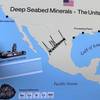AAPA: MAP-21 Passage is Forward Progress
America’s Ports, Freight System Recognized in MAP-21 Surface Transportation Bill Reauthorization.
With congressional passage today of MAP-21 (Moving Ahead for Progress in the 21st Century), the American Association of Port Authorities (AAPA) says elements in the two-year, $105 billion surface transportation reauthorization bill elevate the priority of freight movement in a way that constitutes major progress in recognizing the value of America’s seaports and freight network to the economy, jobs creation and business development.
The bill, which includes important language in support of maintaining federal navigation channels and creating a national freight plan, authorizes and funds transportation programs at current levels through the end of fiscal 2014.
AAPA Executive Vice President Jean Godwin said the association and its member ports have fought “long and hard” for many of the provisions agreed to in this bill.
“For the first time, a surface transportation reauthorization includes consideration of the water transportation mode and elevates goods movement priorities that have traditionally been ignored in previous surface transportation bills,” said Ms. Godwin. “This legislation demonstrates meaningful progress toward creation of a national freight policy and highlights the critical importance of fully funding the costs of maintaining America’s federal navigation channels.”
Freight Mobility
Among the provisions in the bill of most interest to ports and the freight community is establishment of a National Freight Policy that includes development of a National Freight Strategic Plan. The National Freight Strategic Plan, along with state freight plans and advisory committees, will enable freight projects that improve cargo movement, reduce congestion, increase productivity and improve the safety, security and resilience of freight transportation. Among the types of projects being addressed are freight intermodal connectors, railway/highway grade separations and geometric improvements to interchanges and ramps – all of which are often sought by the seaport industry.
Also, by continuing the Projects of National and Regional Significance (PNRS) program, the bill authorizes funds for large, multimodal projects that bolster freight mobility in locations that generate national or regional economic benefits. AAPA has supported this program since its inception.
Harbor Maintenance
For the first time in a surface transportation bill, Congress acknowledges the need for and economic importance of maintaining federal navigation channels to their constructed dimensions. This legislation points out the disparity between the money collected from shippers through the federal Harbor Maintenance Tax (HMT) and the funds requested and appropriated for the purpose of maintaining America’s federal navigation channels. In “Sense of Congress” language, the bill acknowledges the shortfall in spending for federal channel maintenance and calls on the administration to request full funding consistent with revenue collected from harbor users for the purpose of maintenance dredging and associated projects.
“The ‘Sense of Congress’ language represents an important first step in considering federal channel maintenance needs,” said Ms. Godwin.
“Overall,” she continued, “while this bill falls short of dedicating needed funding specifically for freight projects, it does create a framework upon which we can prioritize freight mobility needs and address congestion and capacity demands on America’s freight network going forward.”











